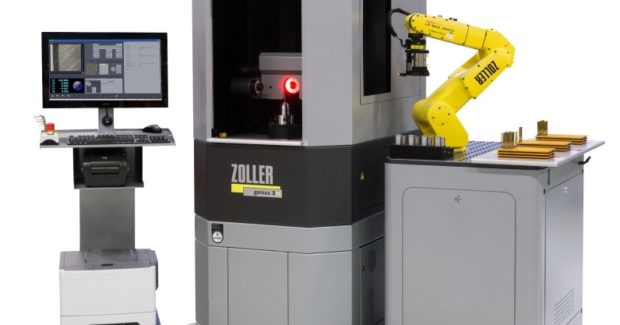How Automated Tool Management Increases Shop Productivity
In high speed, tight tolerance machining operations, eliminating the potential for human error can be a competitive advantage in an increasingly rigid marketplace.
Posted: December 10, 2018
High speed machining calls for tighter tolerances, less scrap, greater process reliability, more accountability and higher efficiency. Tool inspection in this demanding environment comes with certain capacity constraints, such as the number of employees working at any given time, operator consistency, process control (i.e. training operators to ensure that tools are loaded and inspected the same way), and maximizing spindle utilization of the inspection machines so that operators inspect the maximum amount of tools each day. A fully automatic presetting and measurement system, operating with extreme precision and high process reliability, can address these constraints and allow machine shops to trust that the tools are being set and measured properly, every single time, even in an unattended production environment.
For example, a six-axis articulated arm robot, equipped with a sensor with sensitive force-moment strain gage and two pneumatic parallel grippers at D 3-12 mm, can load shafted tools onto multiple CNC-controlled measuring devices with automatic power clamping. This automates and reliably performs the tasks of several employees in a safe, lights-out manner. An operator manually loads the pallet into the machine and the system takes care of the rest: it cleans and inspects the tools, sorts and separates the tools within tolerance from those that are not and places each on different pallets, and even laser etches the tools that are good. This creates a lights-out tool inspection process that eliminates any capacity constraints that would decrease production throughput. At the same time, it significantly reduces the potential for human error.
A premium tool presetting machine built for tight-tolerance work can use a spindle that allows for a change-over accuracy of 1µ and concentricity and runout of just 2µ. This means that regardless of operator, tools are loaded into the spindle and set the same exact way every time. Using an easily understandable graphical interface, the machine software can easily guide operators through hundreds of measuring programs for precise, quick measurements of all kinds of cutting tools. They can also measure and preset tools for upcoming jobs while making chips, then directly output the tool data to the CNC machine, resulting in more spindle uptime and more accurate, faster measurement results, all gathered in a consistent and reliable method that eliminates human error, saves money, and helps the shop deliver more product out the door faster while remaining competitive on price.
These sorts of automated systems typically have an average shop life of ten to 15 years and ensure a solid return on investment, because presetting and measuring machines boost shop productivity significantly: Money is lost whenever a the machine tool isn’t producing chips. Automated presetting and measuring of tools while the spindle runs eliminates machining downtime due to tool changes, which translates into measurable increases in productivity and reduced operating expenses. Add tool management software into the conversation and a shop can realize at least another 5 percent increase in productivity. How?
Total tool organization and management in the facility means knowing exactly where every tool is stored or being used at all times. All tool data is tracked in a central database, where minimum and maximums can be set to reduce overspending on tools that are not needed and identify unavailable tools that are needed. User rights can be set so that only certain employees can check out a specific amount of any given item. Perhaps most importantly, the physical location of every tool is always known, eliminating the costly time that is wasted searching for tools.
This sophisticated degree of tool management generates measurable increases in productivity that can be seen and felt throughout shop operations. It also helps reduce tool costs by up to two percent per year. Studies by RWTH Aachen University (Aachen, Germany) have proven that exactly the same tool costs are incurred for a machine tool in ten years as the machine itself cost. An automated tool management system can save 20 percent on tooling costs, which breaks down to two percent tool cost savings each year for ten years – that’s is two percent more room in the shop budget each year. When comparing the initial cost of a premium presetter or tool management system to the amount of savings the system generates, the average return on investment runs six to 12 months.
In high speed, tight tolerance machining operations, eliminating the potential for human error can be a competitive advantage in an increasingly rigid marketplace.











